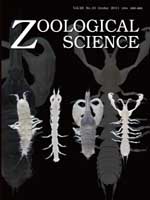We studied beneficial difference of the skin of two snakes. Two snakes were chosen from two different habitats and two families: Colubridae (Natrix tessellata) and Viperidae (Cerastes vipera). The investigations were performed by light and electron microscopy. Histologically, the skin of the studied species show pronounced modifications that correlated with functional demands. The scales in Natrix tessellata overlapped slightly, while in Cerastes vipera they were highly overlapped. SEM shows that scales of Natrix tessellata had bidentate tips while the scales of Cerastes vipera were keeled. Histochemically, in both studied species, melanocytes and collagenous fibres were distributed throughout the dermis. Polysaccharides were highly concentrated in the epidermis and dermis of both species while proteins were highly concentrated only in the epidermis. Transmission electron microscopy (TEM) showed that the skin of both snakes consisted of keratins located in the epidermis. Some lipids and mucus were incorporated into the outer scale surfaces such that lipids were part of the fully keratinised hard layer of the snakes' skins. Lipids are probably responsible for limiting water loss and ion movements across the skin. Melanosomes from epidermal melanocytes were present only in Cerastes vipera. In aggregate, these results indicate that snakeskin may provide an ecological indicator whereby epidermal and integumentary specializations may be ecologically correlated.
How to translate text using browser tools
1 October 2011
Comparative Morphology of the Skin of Natrix tessellata (Family: Colubridae) and Cerastes vipera (Family: Viperidae)
Rasha E. Abo-Eleneen,
Ahmed A. Allam
ACCESS THE FULL ARTICLE

Zoological Science
Vol. 28 • No. 10
October 2011
Vol. 28 • No. 10
October 2011
Histochemistry
reptiles
scales
skin
snake




